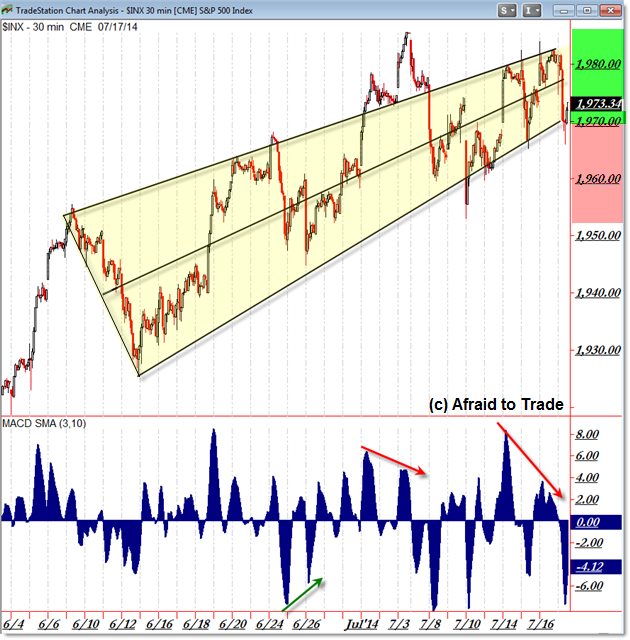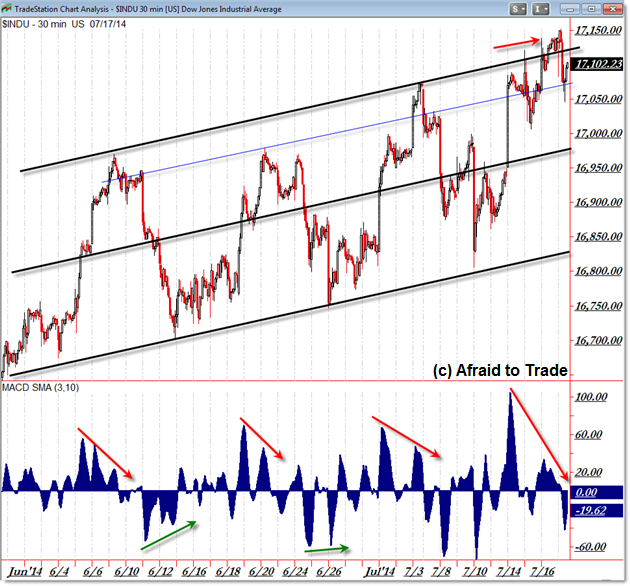Quick Updating SP500 and Dow Jones Trendlines and Targets
What quick-reference levels should we be watching on the S&P 500 and the Dow Jones Industrial Average and why are the trendline patterns different?
Let’s start with the S&P 500’s rising wedge pattern:

There’s certainly more than one way to draw similar trendlines, but the pattern above shows a compressing or potential “Rising Wedge” pattern developing in the S&P 500.
Our key focal points are the easy-to-remember 1,970 (today’s spike-reversal low) and 1,982 which has developed as a short-term resistance/reversal level.
Note the negative divergences that undercut the early July and present rallies into the 1,980 level.
We’ll be neutral between these two levels and otherwise breakdown bearish on a clean impulse under the 1,970 region.
Otherwise, do note that the trend and structure is rising and it has been a better strategy to trade with the bulls/buyers rather than against them.
The structure is slightly different – as are the levels – in the Dow Jones:

The Dow Jones takes on a more traditional “Rising Parallel Trendline Channel” or Rising Rectangle Structure.
As such, the key focal points remain the 17,150 high and similar spike-reversal low off 17,050 (along with the midpoint or “Round Number” 17,000 level).
Failure here – in a break under 17,050 – suggests that the Dow will logically trade down as it has previously toward the midpoint (17,00)) then the 16,850 rising lower trendline support target.
No matter what others strategies or indicators you use for your analysis, keep these simple trendline targets in mind.
Follow along with members of the Daily Commentary and Idealized Trades summaries for real-time updates and additional trade planning.
Corey Rosenbloom, CMT
Afraid to Trade.com
Follow Corey on Twitter: http://twitter.com/afraidtotrade
Corey’s book The Complete Trading Course (Wiley Finance) is now available along with the newly released Profiting from the Life Cycle of a Stock Trend presentation (also from Wiley).


2 Comments
Comments are closed.